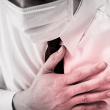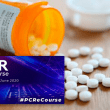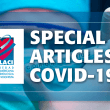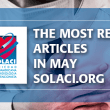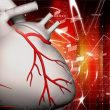Cath lab activation—and everything that entails—within 20 minutes was associated with the target of performing primary angioplasty in under 2 hours in at least 75% of patients. Historically, door-to-balloon time was measured, which provided a rough idea of where there could be flaws to fix. This is particularly true in the case of patients who need to...
Randomized Evidence on the Helpfulness of Yoga for Cardiac Rehabilitation
This work brings us evidence that yoga-based cardiac rehabilitation improves how patients feel about their health and reduces the time it takes them to resume the activities they could perform before experiencing an infarction. That is important information with impeccable timing. The COVID-19 pandemic has interrupted most of the assistance we offer to cardiovascular patients,...
European Association of Percutaneous Cardiovascular Interventions Position Statement During the Pandemic
This document emerges from the assembly of the European Association of Percutaneous Cardiovascular Interventions (EAPCI) and the Acute Cardiovascular Care Association (ACVC). Both associations gathered their most prominent experts, including people who worked in the European areas most affected by COVID-19. Their aim was to modify diagnostic and therapeutic algorithms to adapt the evidence collected...
EuroPCR 2020 | FABOLUS FASTER: In the Quest for the Fastest, Most Potent Platelet Inhibition
This small study tested the pharmacodynamic effects of several antiplatelet agents. It concluded that tirofiban (Aggrastat) provides “more potent and consistent” inhibition of platelet aggregation compared with cangrelor in patients with ST-segment elevation myocardial infarction undergoing primary angioplasty. Thirty minutes after the initiation of treatment, there was a nearly threefold difference between tirofiban and cangrelor...
Compare-Acute Sub-Study: Natural History of Non-Culprit Lesions in MI
The aim of this study was to determine the prognostic value of fractional flow reserve (FFR) of non-culprit lesions in STEMI patients. We analyzed data of all Compare-Acute patients (Comparison Between FFR Guided Revascularization Versus Conventional Strategy in Acute STEMI Patients With MVD) after PCI, from lesions assessed with FFR and treated medically. The treating...
Special Articles on COVID-19
Myocardial Injury for COVID-19 Even in Young Patients with Mild Symptoms Most young COVID-19 patients not requiring hospitalization showed abnormal cardiac magnetic resonance imaging (CMR) beyond two months after diagnosis. Read more HERE Infarction, Stroke and Aortic Emergency Syndromes in the Shadow of the Pandemic The coronavirus pandemic has had a negative impact on the...
The Most Read Scientific Articles of May in Interventional Cardiology
01- Management of Infarction During the COVID-19 Pandemic Patients with cardiovascular disease infected with COVID-19 are at a particular risk for morbidity and mortality. In any case, it should be noted that most patients requiring cardiovascular care due to ischemic heart disease, peripheral vascular disease, or structural heart disease are not infected. Read more HERE...
Temporary Emergency Guidelines for Infarction During the Pandemic
Several United States societies (the American Heart Association [AHA] among them) have answered the question of many physicians in the front lines: what is the ideal strategy for the treatment of ST segment elevation myocardial infarction (STEMI) during the COVID-19 pandemic? This document intends to ensure that patients with STEMI continue to receive adequate, proven...
Cardiovascular Sequelae Associated with COVID-19
Myocardial injury, as defined by an increased troponin level, can occur due to both ischemic and nonischemic processes. Myocarditis would be an example of a nonischemic event. A severe, acute respiratory infection causing hypoxia, especially due to COVID-19, can cause this myocardial injury. Elevated troponin levels have been described in patients infected with COVID-19, with...


